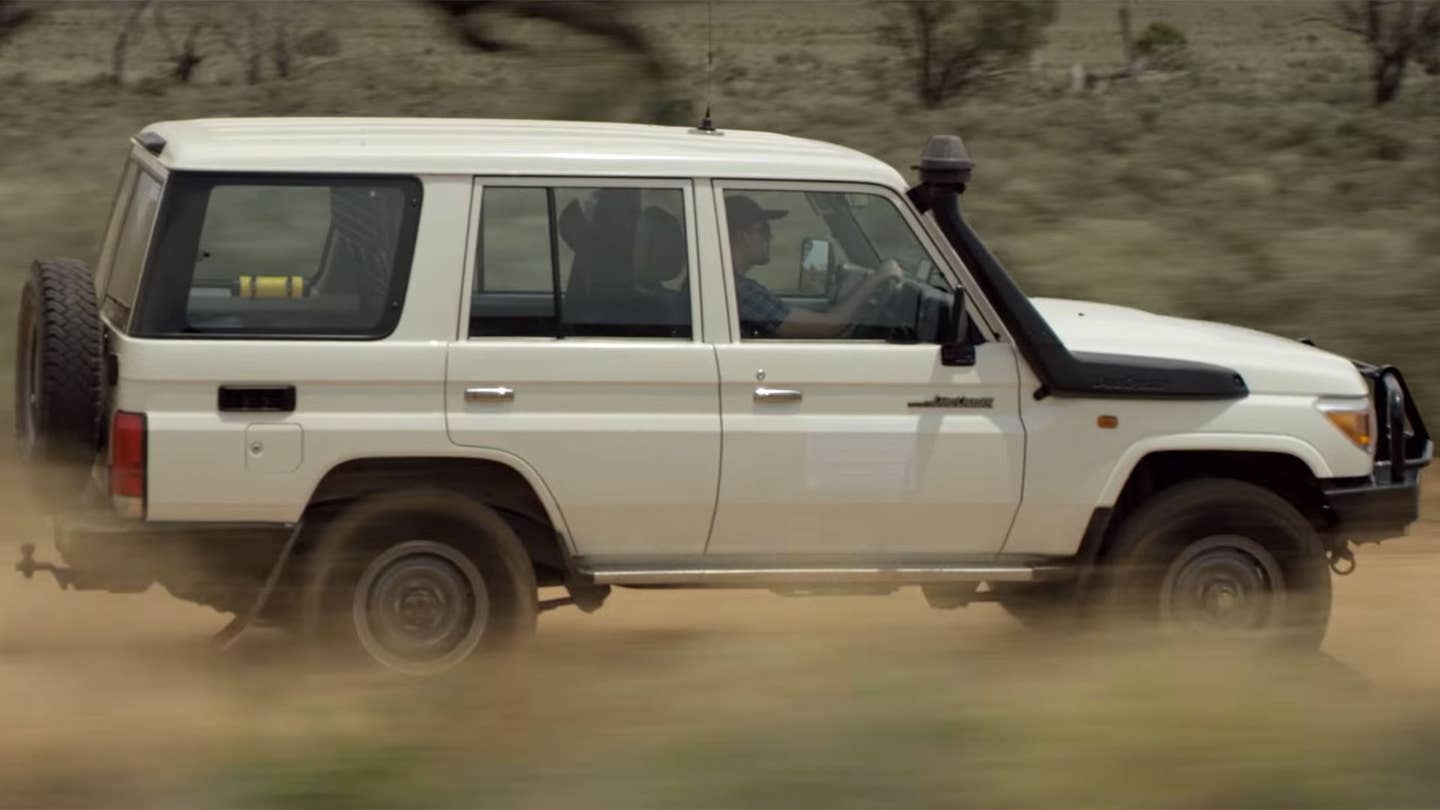Toyota’s Land Cruiser Emergency Network is an Outback Lifesaver
Legendary SUVs provide emergency Wi-Fi messaging to one of the remotest places on Earth.

The Mars Society is an 18-year-old international non-profit dedicated to settlement and exploration of The Red Planet. In 2014 the society’s Australian arm sent researchers out to Arkaroola in Australia’s Northern Flinders Ranges for “Mars analogue research,” meaning Arkaroola is so dirty, rocky, and remote it might as well be another planet. That made the Flinders Ranges the perfect place for Toyota Australia, working with ad agency Saatch & Saatchi and Dr. Paul Gardner-Stephen at Adelaide’s Flinders University, to test the Land Cruiser Emergency Network (LEN). LEN takes advantage of the pervasive concentration of Land Cruisers in the outback to create an emergency communication network; fitted with a plug-and-play device about the size of a flashlight, each SUV becomes a node that can transmit messages to other Land Cruisers and eventually to a base station, where it’s forwarded to emergency responders.
Some numbers to set the scene: not only is Australia the third-least densely populated country in the world, more than 65 percent of the continent – about five million square kilometers, an area larger than the European Union – goes without cell service. Toyota says that, per capita, Aussies buy more of its 4x4 than anywhere else on the planet, with market share above 90 percent in some outback areas. If the automaker estimate of having roughly 500,000 Land Cruisers in service in Oz is correct, then Land Cruisers outnumber cell towers nationwide more than 30 to 1.
That makes the ‘Cruiser a natural to serve as a roaming network station. The LEN node device – modeled off an archaic scroll used to relay messages in ancient societies – uses Wi-Fi, UHF, and store-and-forward Delay Tolerant Networking (DTN) to receive and transmit geotagged SMS messages. NASA, DARPA, and the European Space Agency are studying DTN as a remote-terrain and interplanetary communication tool because it can reconcile the needs of both heterogeneous networks and interrupted connectivity. Once the device is fitted to a ‘Cruiser, it can pick up a signal from up to 15.5 miles away. When someone in an emergency sends a message from a Wi-Fi-enabled vehicle, a Land Cruiser within range ‘catches’ the message. If the next node is more than 15 miles away, that first Land Cruiser would hold onto the message until it finds another node, then send it on. In a known emergency the ‘Cruisers could be placed to provide an ad-hoc network for managing disaster response – the same kind of tech that Google, Facebook, and universities are investigating, but using drones or balloons.
Gardner-Stephen co-founded the open-source messager Serval after the 2010 earthquake in Haiti, and focuses on decentralized and disaster-resistant communications systems. He and his team did the work to redesign the node hardware to use UHF signals that permit longer signal range.
Testing commenced in August 2015 using 10 Land Cruisers traveling throughout 50,000 square kilometers (a little larger than Vermont and New Hampshire combined) of the Flinders Ranges, and it apparently did well enough to warrant a public unveiling. Voice and data service isn’t possible yet, only the geotag messages, but with a successful test concluded the three interested parties are working on wider possibilities.
Toyota, Gardner-Stephen, and Saatchi want to commercialize the service, but that needs help from government. LEN would need to license a slice of the wireless spectrum, conform to emergency response protocols, and perhaps provide legal cover to a Land Cruiser drivers who didn’t roam enough to relay an emergency message to the next node. There’s also a lot more testing ahead; said the good doctor, “It’s a bit like the Death Star in the Return of the Jedi. The big gun works, but if you open the wrong door you might find the vacuum of space on the other side.”
